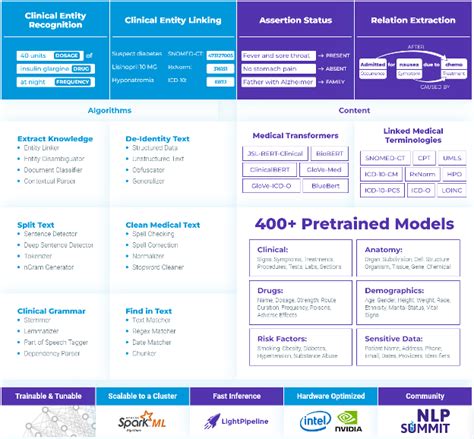The Power of Abstraction: Unlocking Medical Data Insights
The sheer volume of data generated within the healthcare industry is staggering. From patient records and medical imaging to genomic sequences and wearable sensor readings, the potential for extracting meaningful insights is enormous. However, raw medical data is often messy, complex, and difficult to interpret directly. This is where the power of abstraction comes into play. Abstraction, the process of simplifying complex systems by focusing on essential features and ignoring irrelevant details, is crucial for unlocking the true potential of medical data. It allows us to transform raw information into actionable knowledge, driving improvements in patient care, research, and healthcare administration.
What is Abstraction in the Context of Medical Data?
In the medical field, abstraction involves representing complex medical information in a simplified, generalized form. This could range from summarizing individual patient records to creating aggregated statistical models of disease prevalence or treatment efficacy. It allows us to move beyond the raw data—the specific numbers, images, and text—and focus on higher-level patterns and relationships. Effectively, we're creating a map of the data landscape, highlighting the most important features without getting bogged down in the minutiae.
How Does Abstraction Work in Practice?
Abstraction takes many forms in medical data analysis. Consider these examples:
- Data Aggregation: Instead of examining individual patient blood pressure readings, we might calculate the average blood pressure for a specific demographic group. This aggregated data reveals broader trends and potential risk factors.
- Data Classification: Medical images (X-rays, MRIs) can be classified using machine learning algorithms to identify patterns indicative of specific diseases. This simplifies the diagnostic process, potentially leading to faster and more accurate diagnoses.
- Ontology Development: Creating structured vocabularies and ontologies allows for consistent representation of medical concepts, facilitating data integration and analysis across different healthcare systems. This enables researchers to combine data from diverse sources for larger-scale studies.
- Natural Language Processing (NLP): NLP techniques can extract key information from unstructured clinical notes, such as diagnoses, medications, and procedures. This structured information is then easier to analyze and integrate into broader datasets.
Why is Abstraction Important in Healthcare?
The benefits of abstraction in medical data analysis are manifold:
- Improved Diagnostic Accuracy: Abstraction techniques, particularly machine learning models, can aid in the early detection and diagnosis of diseases, leading to better patient outcomes.
- Enhanced Treatment Planning: By analyzing aggregated patient data, clinicians can personalize treatment plans and improve the efficacy of interventions.
- Accelerated Medical Research: Abstraction facilitates the analysis of large-scale datasets, accelerating the pace of medical research and the development of new treatments and therapies.
- Streamlined Healthcare Administration: Abstraction can help to optimize resource allocation and improve the efficiency of healthcare systems.
- Better Public Health Surveillance: Analyzing aggregated data can reveal trends in disease outbreaks, helping public health officials to take proactive measures to protect the population.
Challenges and Considerations
While abstraction offers tremendous potential, it's crucial to acknowledge potential challenges:
- Data Privacy and Security: The abstraction process must adhere to strict privacy regulations to protect patient confidentiality. Data anonymization and de-identification are critical aspects of this process.
- Bias in Data: Bias in the original data can be amplified through the abstraction process, leading to inaccurate or unfair conclusions. Careful consideration of potential biases is necessary.
- Interpretability and Explainability: Some abstraction techniques, such as complex machine learning models, can be difficult to interpret. Ensuring the explainability of models is vital for building trust and ensuring responsible use.
The Future of Abstraction in Medical Data
As medical data continues to grow exponentially, the role of abstraction will only become more critical. Advancements in artificial intelligence, machine learning, and data visualization techniques will continue to refine our ability to extract meaningful insights from complex datasets. The development of robust, ethical, and transparent abstraction methods will be crucial for realizing the full potential of medical data and improving healthcare for all.
What are the ethical considerations of using abstraction in medical data?
The ethical considerations surrounding abstraction in medical data are significant. The primary concern revolves around ensuring patient privacy and avoiding bias. Rigorous anonymization techniques are paramount to protect sensitive information. Furthermore, careful attention must be paid to potential biases within the data that might lead to discriminatory or unfair outcomes. Transparency and explainability of the abstraction methods are also crucial to foster trust and ensure responsible use of the resulting insights.
How can abstraction improve patient outcomes?
Abstraction can significantly improve patient outcomes in several ways. By enabling earlier and more accurate diagnoses, treatments can begin sooner, leading to better chances of recovery. Personalized treatment plans, informed by aggregated data, can improve the effectiveness of interventions. Furthermore, the identification of previously unknown risk factors through data analysis can lead to proactive measures to prevent disease. Ultimately, abstraction contributes to a more efficient and effective healthcare system, resulting in better patient care.
What are some examples of abstraction techniques used in medical imaging?
Several abstraction techniques are used in medical imaging. For example, image segmentation separates the image into meaningful regions, highlighting specific organs or tissues. Feature extraction identifies relevant characteristics from the image data, such as texture or shape, that can be used for classification or analysis. Finally, machine learning algorithms can be trained to classify images based on these extracted features, providing an automated diagnostic tool. These techniques allow for a simplified representation of complex medical images, facilitating diagnosis and further analysis.

